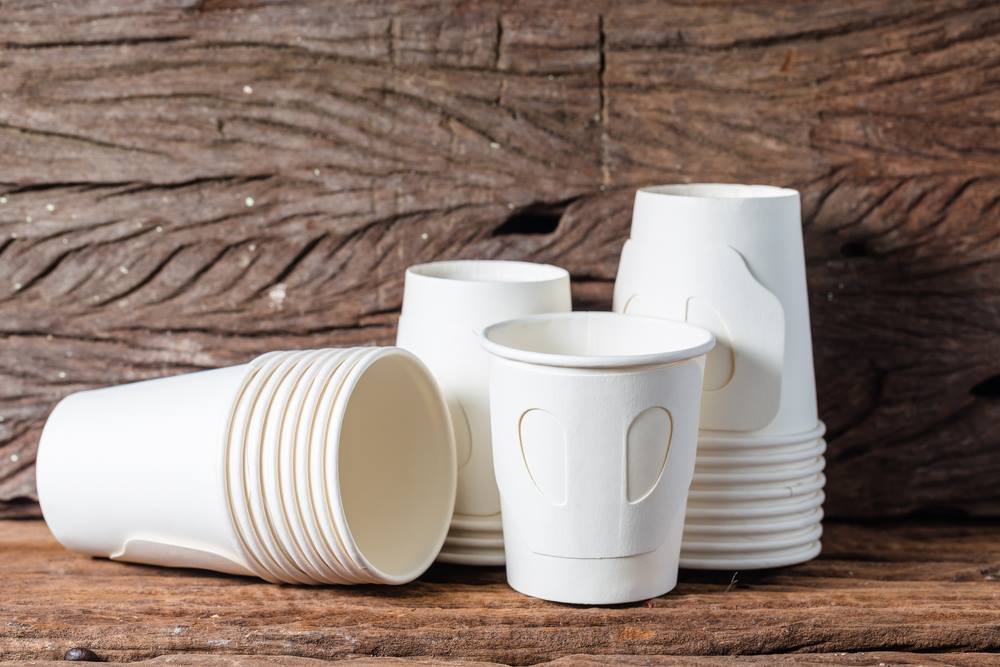Disposable Cups Paper vs Plastic. The $1Million Question!

Disposable cups are ubiquitous in the twenty-first century, ever since their invention in the early years of the previous century, and have since come far. The two main materials are paper and plastic cups, and these come in handy when one needs to drink on the go without worrying about clean up.
But since both kinds of cup have their own ups and downs, it's hard to decide on which one is better for the environment overall. Though both are good for conserving water by ending the need for washing reusable cups, a number of other factors involved in manufacturing these cups can impact the environment.
A Brief History of Disposable Cups
The paper cup began its odyssey in the previous century. The famous Dixie cup, perhaps the most famous brand of disposable paper cups in the United States, was invented by Lawrence Luellen in 1907. But what was the move that prompted people to switch from glass or ceramic cups to the ever so useful paper ones?
At the dawn of the 20th century, it was a fairly common practice to drink from shared glasses at public water sources, such as public faucets or water barrels kept in trains. As might be expected, this kind of cup sharing was the source of public health concerns. Lawrence Luellen, a Boston, Massachusetts attorney, was the first one to address this problem.
The paper cup he invented was the standard for disposable cups until the 1970s when Solo Cups emerged with their signature red colour. Since then, these red plastic cups have become very popular. Of particular note, they find a great deal of usage at parties where alcohol flows freely.
Today, both kinds of cups are quite common across the globe. But the question of which one is better for the environment is debatable. Research on the matter can be confusing, but we'll try to sort through it all today and figure out whether paper or plastic is better on the planet.
Manufacturing and Environmental Impact
Over the last few decades, major changes have occurred in the manufacturing of paper and plastic, not just in cups but all items. According to the EPA, paper manufacturing has skyrocketed by over 300 percent since 1960 to 2007. Their numbers for plastic manufacturing is great; plastic manufacturing has shot up beyond 7000 percent in the same stretch of time.
But while manufacturing both of these items calls for a great deal of energy, the environmental impact goes beyond even that. In 2007, more than a 1 million tons of paper was used for cups and plates. Almost all of them were simply thrown away and left in landfills. At the same time, more than 800,000 tons of plastic plates and cups were manufactured, most of them also ending up in landfills.
Recycling Disposable Cups
The main advantage of paper cups is biodegradability. These cups breakdown quickly with no harm, but plastic cups can't say the same. Conversely, their impact on landfills is a major concern since there is such an immense number of cups regularly produced.
That said, both of these cups can be made from recycling materials, which is very good for the environment. This is a better option for the ecology of Earth than those made with typical materials. These recycled materials save a great deal of energy and material by ending the need to obtain raw materials.
Recycling disposable cups can also reduce the amount of waste ending up in landfills. Over 80 percent of the United States population has access to recycling programs and centers. That said, the difficulty of accessing recycling options tends to cause people to simply throw away these cups.
For most consumers, these environmental considerations are typically counterbalanced by the money saved by paper and plastic cups. In addition to being very convenient to use, buying them in bulk also means they cost pennies on the dollar for each cup. Since nobody wants to risk breaking mugs or glasses when they're on the go, the popularity of disposable cups is even higher.
Lifecycle Assessments
Thus far, the main difference between paper cups and plastic cups is biodegradability. But to figure out the greenest option, we must examine their "life cycle assessments". In other words, we have to contemplate a variety of possible ecological impacts, including carbon footprints, ozone depletion, global warming impacts, harmful chemicals and resource consumption issues these cups may cause.
What is typically overlooked in this decades-old debate is that Styrofoam is also a form of plastic. Examining each life cycle assessment of these cups, plastic cups don't cause much more strain on the world's ecology than a paper cup. Conversely, the carbon footprint of a plastic cup is actually smaller than a paper cup's and even calls for less energy during the production process.
Does that actually make plastic cups the better alternative? Not exactly.
We also have to consider that, as previously mentioned, Styrofoam takes much, much longer to degrade. What this emphasizes is how, ultimately, our consumer choices do depend on what's most important to each of us. If you are mainly concerned about waste reduction or pollution, it is a good idea to avoid plastic cups, even though its carbon footprint actually is lower.
Tim Greiner, managing director of Pure Strategies, speaking of the paper against plastic debate, has gone on record as saying that while plastic is easier on climate change and water health, the paper is better on toxicity, though neither is very good on recyclability.
Paper Against Plastic; A Genuine Tie?
A study from the Netherlands recently conducted is an amazing illustration of exactly how similar both paper and plastic cups' environmental impact is so similar when all factors are properly considered. This study examined a full ten categories of environmental impacts of both types of cups. According to the results of this study, paper cups were superior in five of the categories and plastic cups were superior in the other five categories.
When comparing the manufacturing of cups, plastic cups: required around 17 percent less energy, used around 42 percent less water and used 22 percent less petroleum in order to gather materials and transport cups.
So the choice is up to you really. Plastic cups are cheaper but are only good for cold drinks. Paper cups are somewhat less eco-friendly but prevent thermal burns. We recommend a combination of the two for maximum effectiveness.
Also in News

The Top 8 Party Themes For Kids

The Complete Kids Party Checklist


